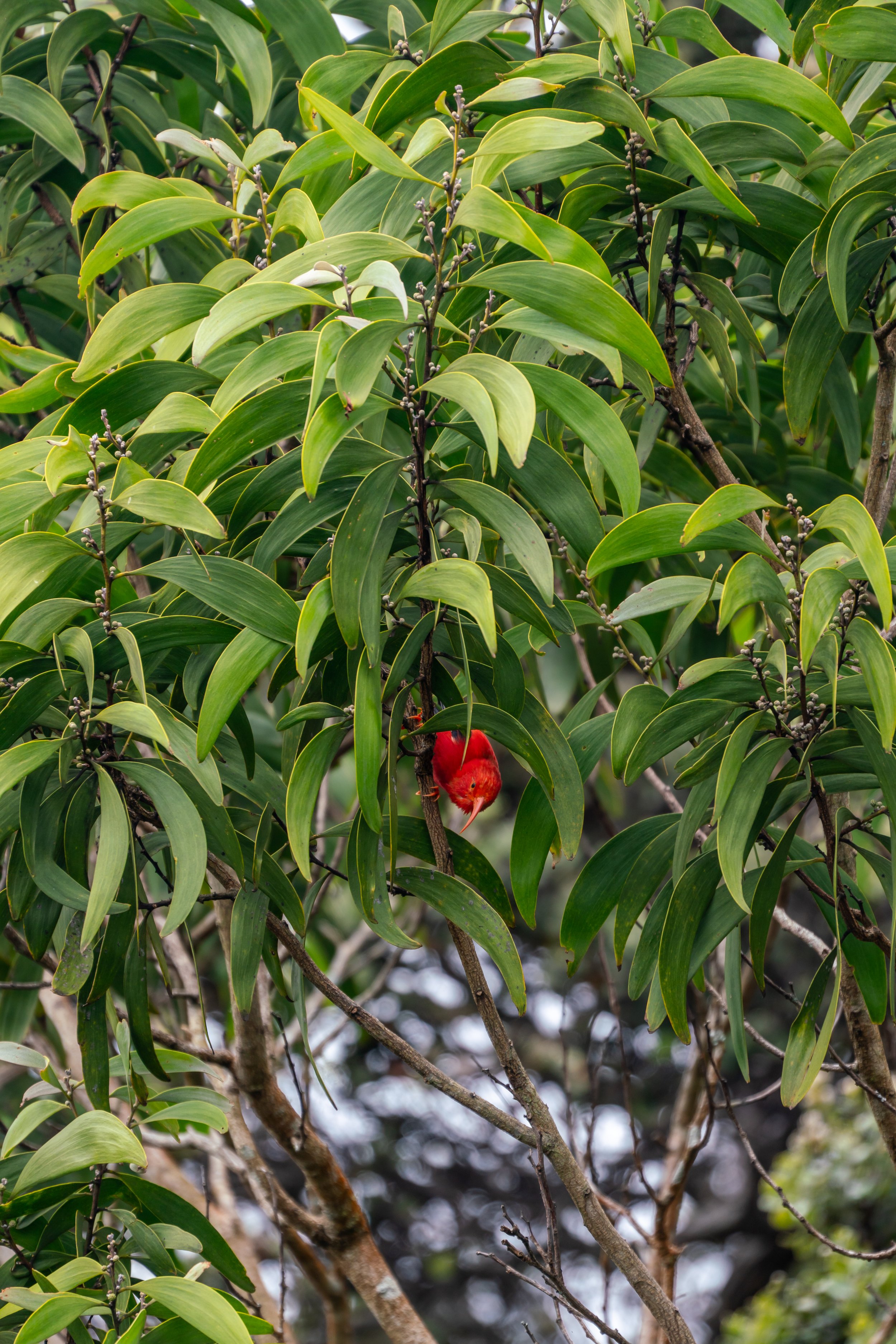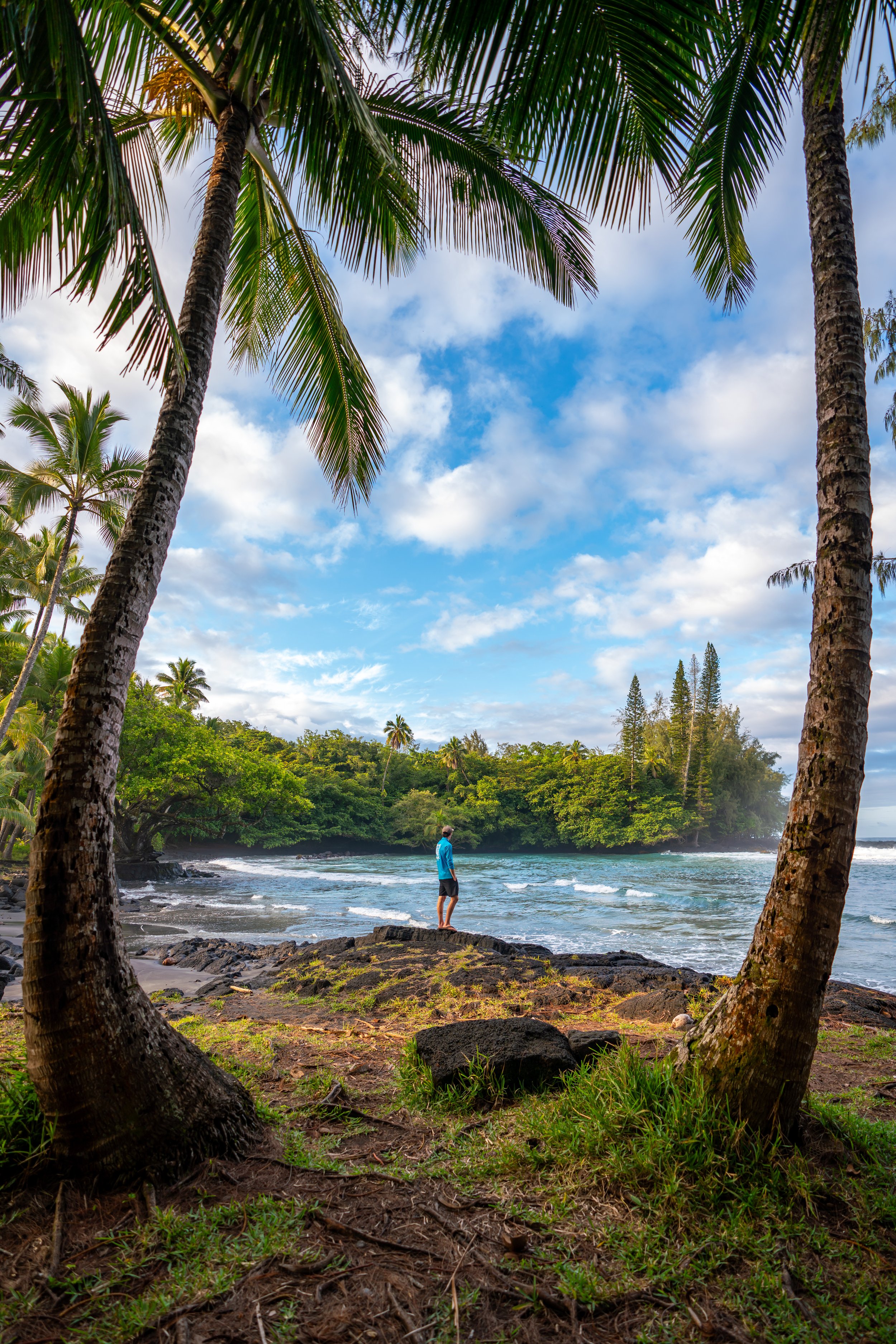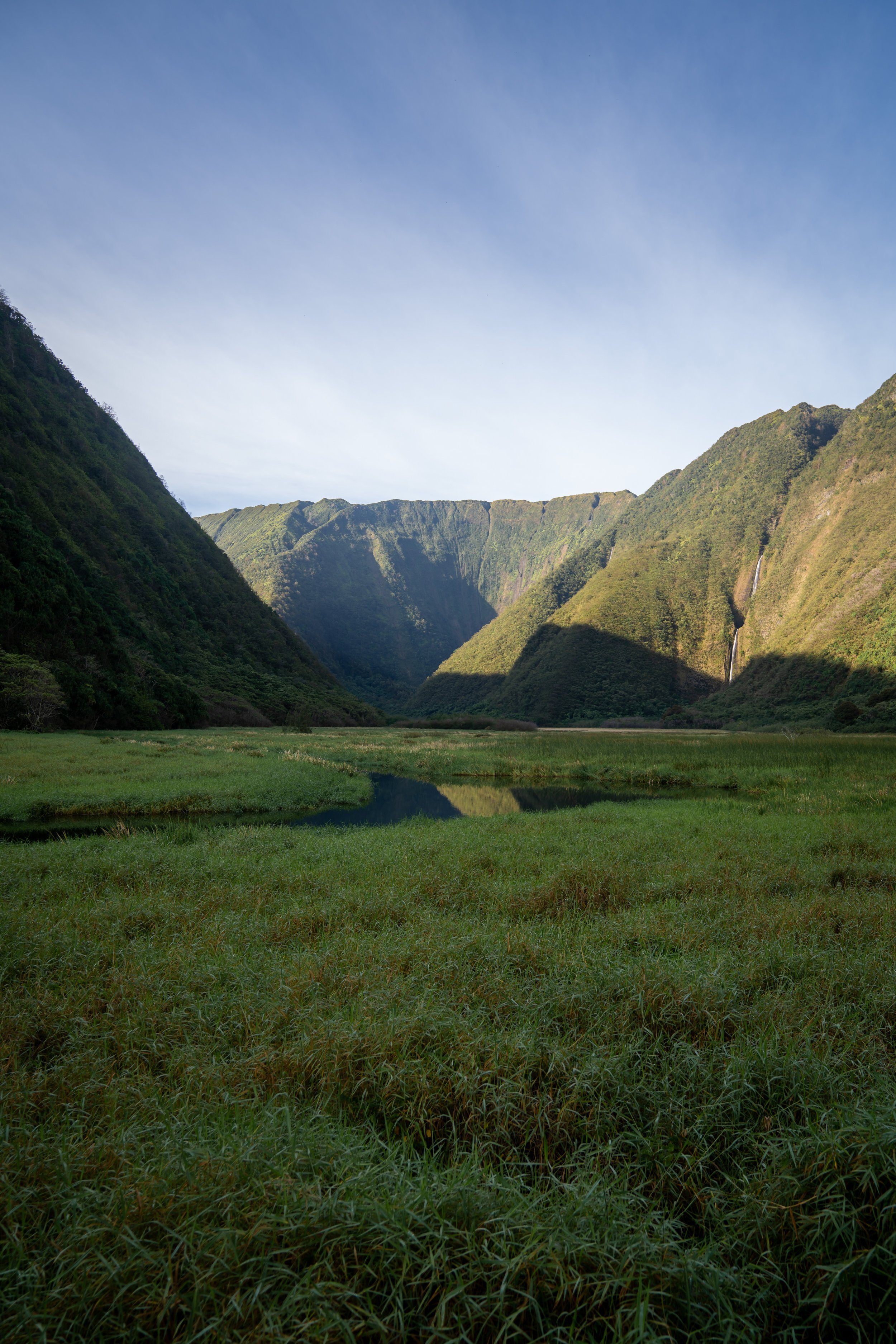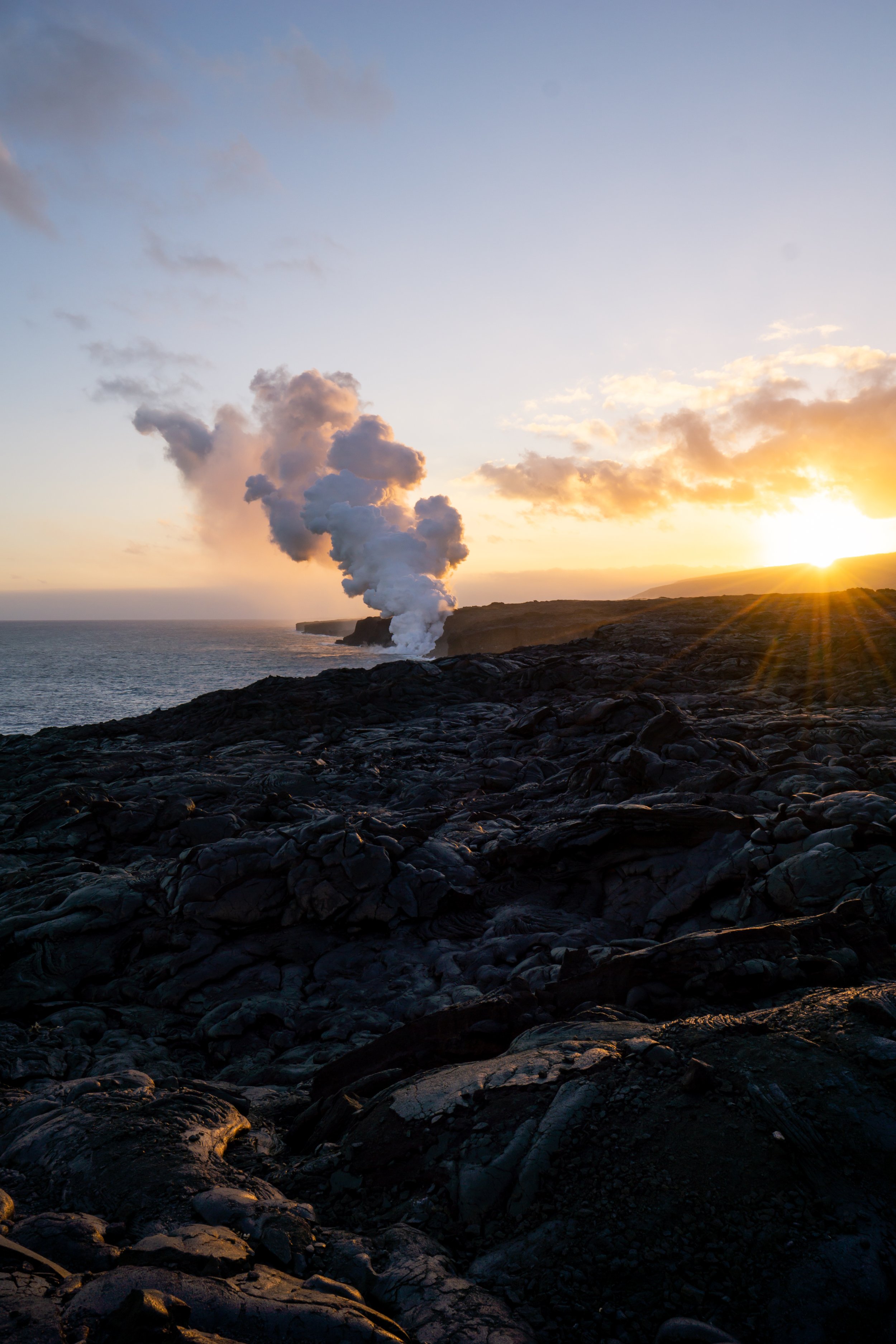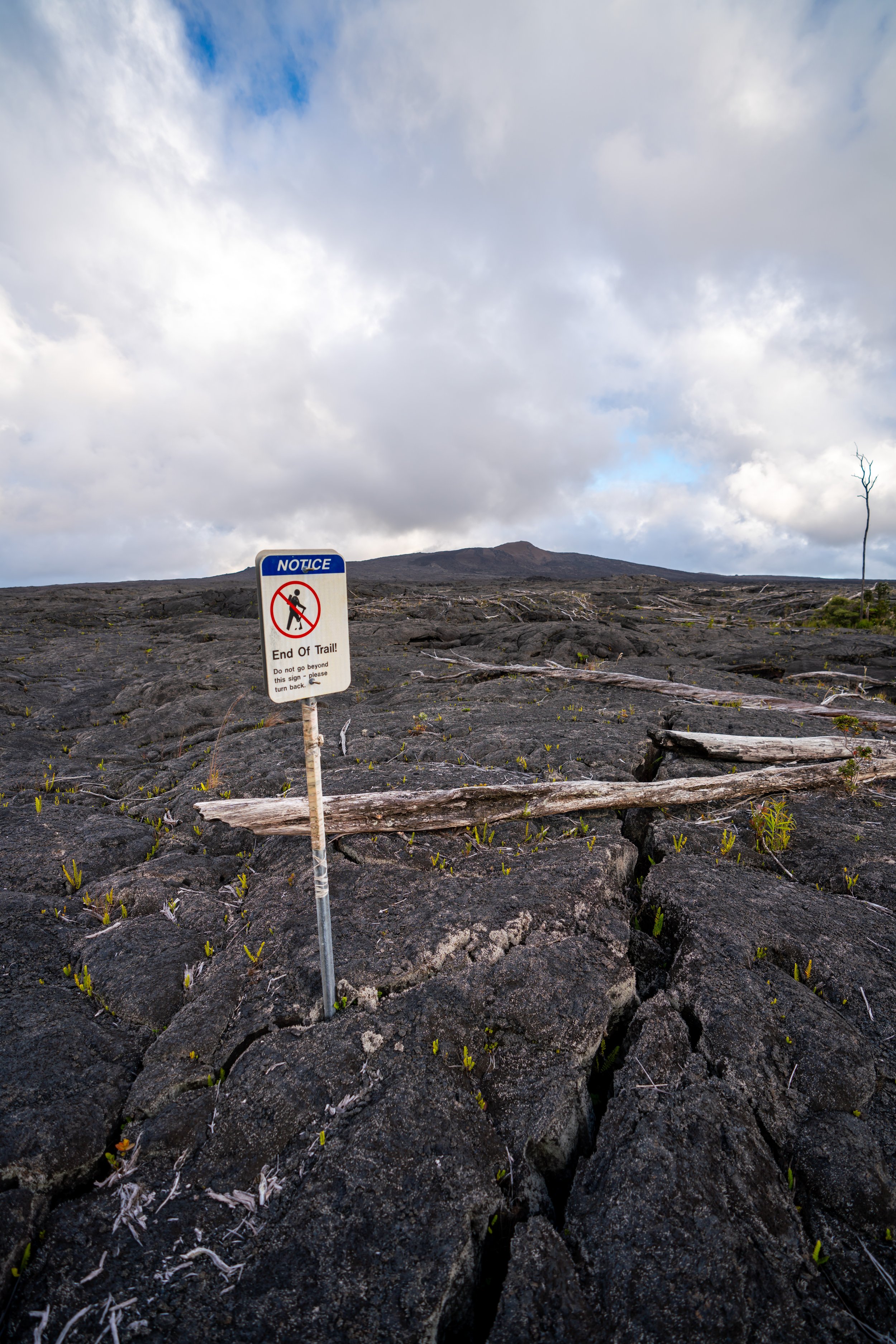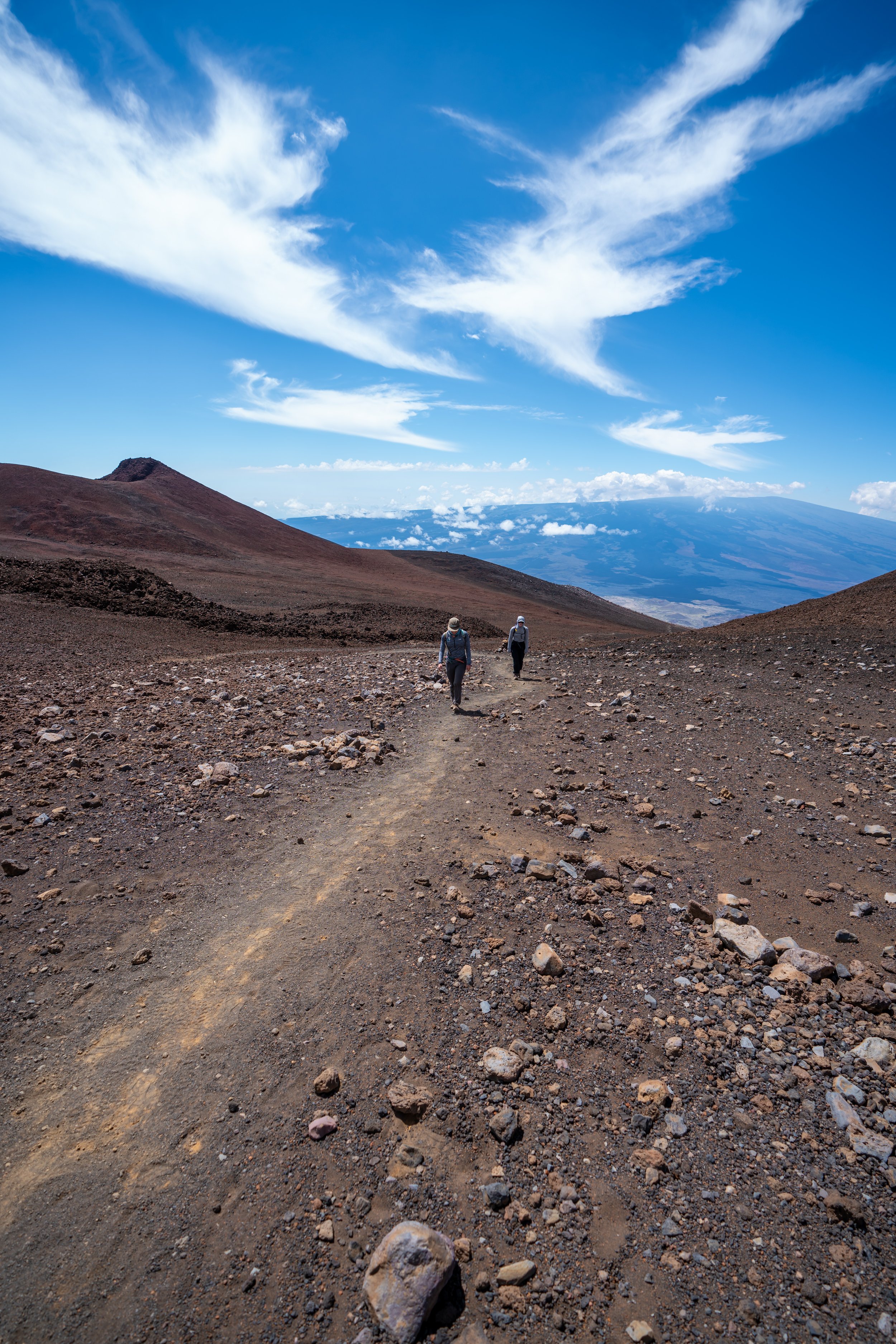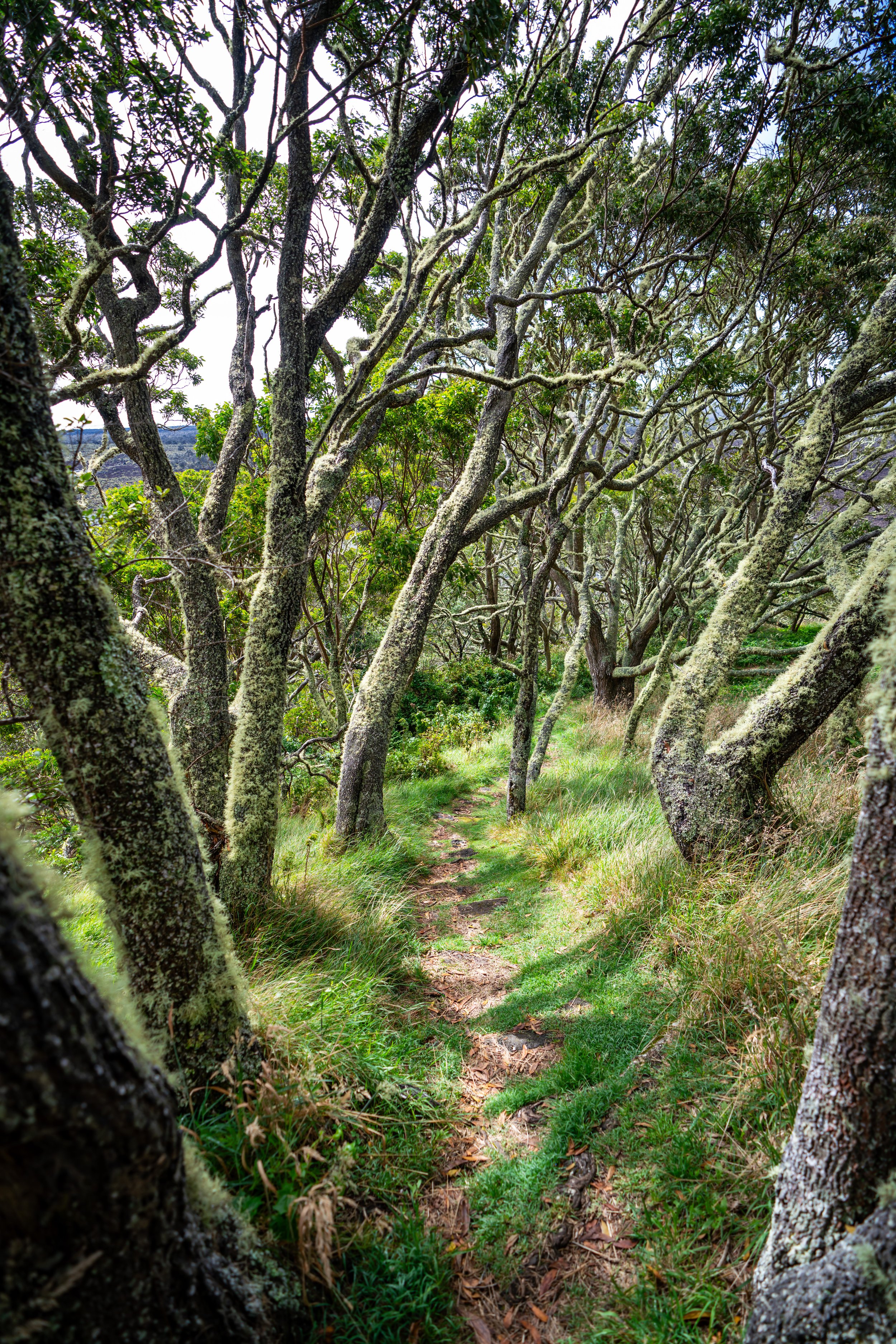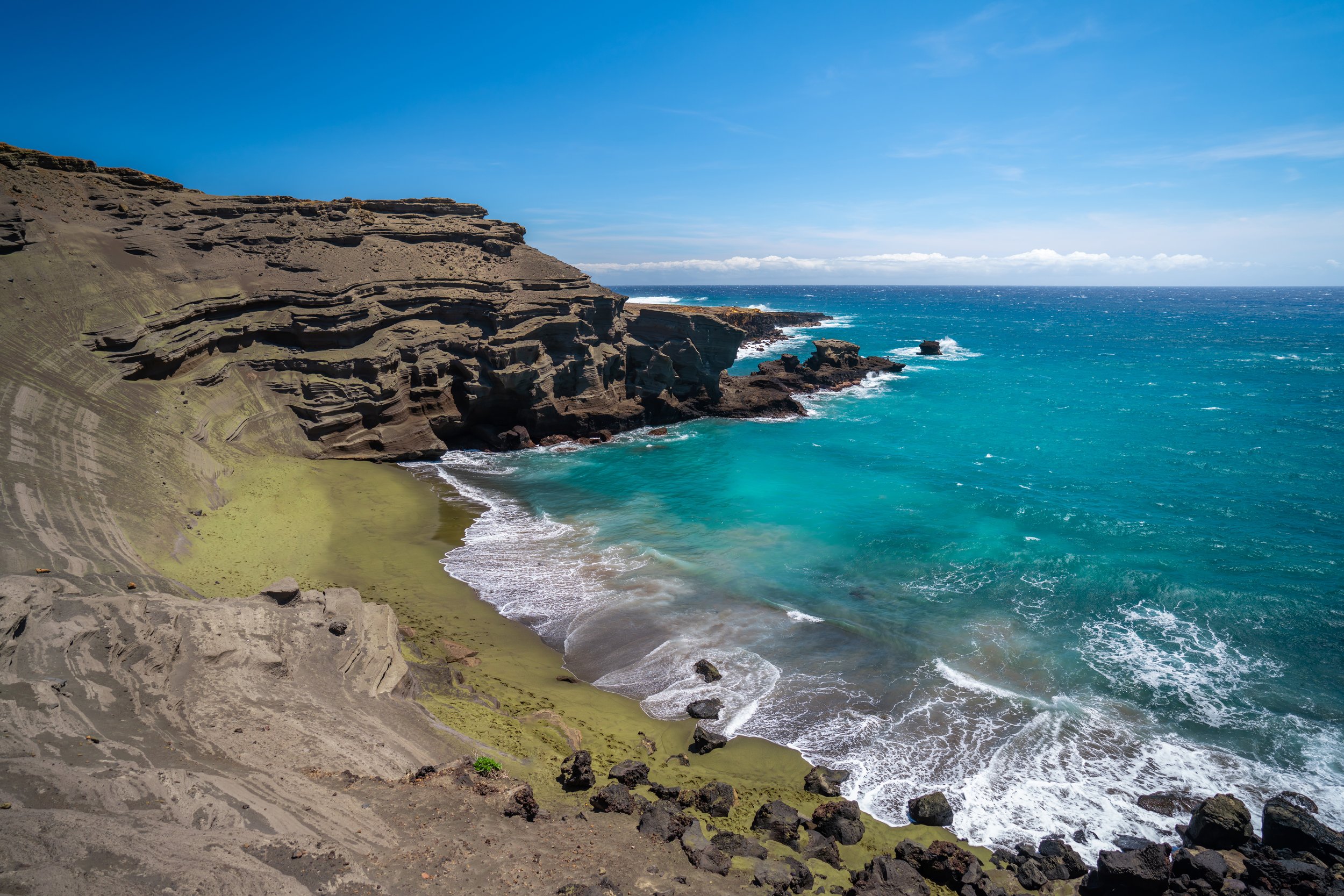Hiking the Pololū Trail on the Big Island of Hawaiʻi
Distance (Roundtrip): 1.2 miles / 1.9 km
Elevation Change: ~400 ft. / 122 m
The Pololū Trail, also called the Pololū Valley Trail, is easily one of the best things to do on the Island of Hawaiʻi!
I truly believe this because the Kohala Coast—which includes Pololū Valley—is one of the most stunning coastlines in the world, much like the Kalalau Trail on Kauaʻi’s Nāpali Coast. In addition to this, Pololū Valley is also a very historic and culturally significant place on the Big Island, which all hikers will have the opportunity to learn about before beginning the hike into Pololū.
That being said, those who are up for the short but steep 0.6-mile (1.0 km) trail will have the opportunity to enjoy Pololū Black Sand Beach at the bottom of the valley, which is easily one of the most beautiful beaches on the Big Island—only to be compared with the black sand beach in Waimanu Valley, further down the Kohala Coast.
Pololū Trailhead Parking
Parking for the Pololū Trail is located at the very end of Akoni Pule Highway.
Know that if you’re parking for the Pololū Lookout only, you can park as close as the lookout. However, if you’re visiting the lookout to hike the Pololū Trail, parking spaces are limited at the lookout itself, meaning that you will typically be asked to park along the road just prior.
Google Maps Directions: Pololū Valley Lookout
Hiking the Pololū Valley Trail
From the Pololū Valley Lookout, the Poloū Trail descends a series of four switchbacks on an entirely downhill trail.
If staff or volunteers are present at the lookout, they will typically stress difficulty of hiking back out, as there is no cell phone service or way back out of Pololū other than the trail.
Be cautious on the very beginning of the Pololū Trail, especially when it is or has been raining recently.
Numerous people have twisted their ankles and broken legs at the very beginning of the hike.
As the Pololū Trail descends, the views of the beach and the Kohala Coast get better and better the further you go.
This is one of the biggest reasons why I recommend hiking the trail, as the views from the lookout are not nearly as good as the views on the Pololū Trail.
The tree and the fruit in the photo below are called Noni, and while it is edible and contains many health benefits, I recommend against eating the ripe fruit. Noni is truly a quite disgusting edible fruit.
Additionally, you may be curious about the yellow fruits on the trail, which are called Lemon Guava (Psidium guajava). Again, I don’t recommend eating the guavas because they are generally quite tricky to eat, since the seeds inside are so hard.
Pololū Valley
After only 0.6 miles (1.0 km), the Pololū Trail ends at the bottom of Pololū Valley.
Pololū Beach
While Pololū Beach may look like a fun place to get in the water, it’s strongly advised that you don’t.
The waves and currents in Pololū are nothing to take lightly, as Pololū Valley sees much of a direct open ocean swell. On top of this, there are no lifeguards or rescue services in Pololū Valley, meaning that if you get into trouble, you only have yourself and those around you to get back to safety.
ʻĀwini Trail (Hiking Across Pololū)
The ʻĀwini Trail is essentially the trail across the bottom of Pololū Valley, which continues for many miles past Pololū over to Honokāne Nui Valley on the other side.
If you choose to hike across Pololū Valley to the far side, I recommend heading back into the trees, where it is much easier to walk, as opposed to the rocky beach shown in the photo above.
It only adds about 0.2 miles (0.3 km) each way to explore the short trail across the valley.
If you hike to the very far side of Pololū Valley, you will run into a private property sign.
While I know that the ʻĀwini Trail continues past Pololū Valley for quite a ways, I strongly advise you not to go any further. This section of the ʻĀwini Trail traverses some of the most remote parts of the Kohala Mountains, which are typically only visited by those in the conservation community.
Native Plants on the Pololū Trail
The Pololū Trail is a relatively low-elevation hike, meaning that most of the plants you see along the trail are non-native/ invasive species.
That being said, there are still a few native plants to look out for, which include Hala, ʻŪlei, Naupaka, ʻUhaloa, and Alena, to name just a few.
If you would like to learn more about these and tons of other native Hawaiian plants from across the islands, I encourage you to read more in my separate post.
Read My Separate Post: Native Hawaiian Plant Guide



